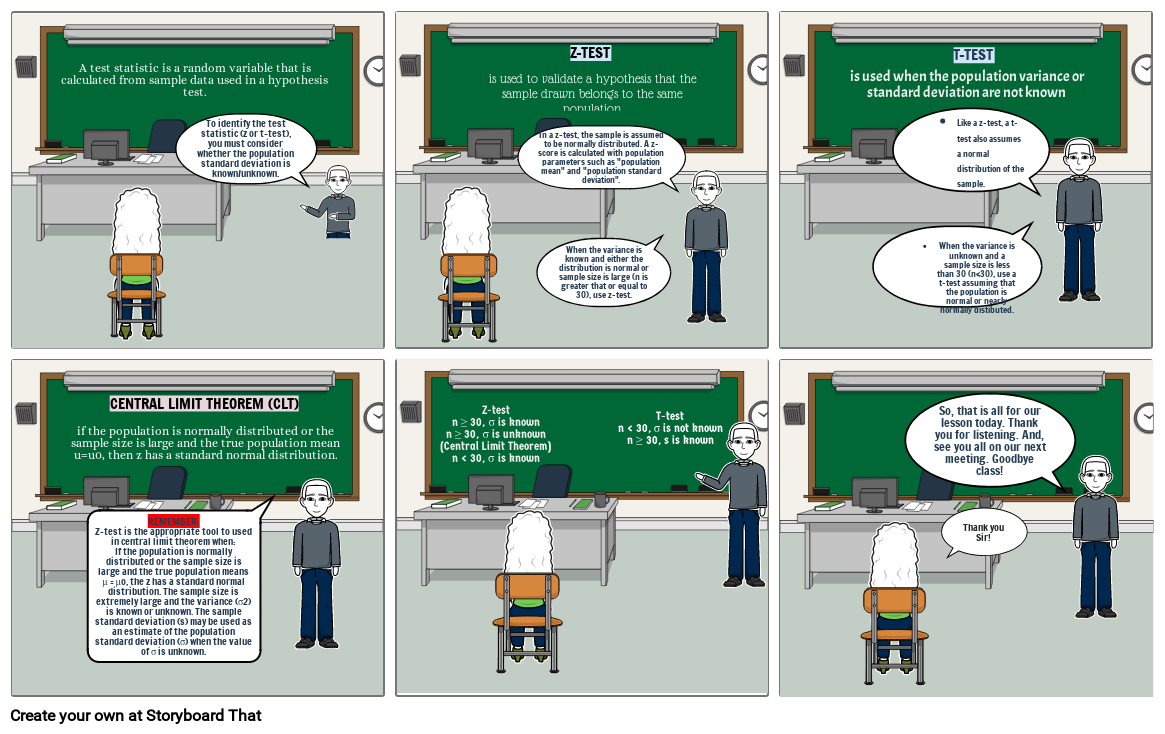Unknown Story

Texte du Storyboard
- A test statistic is a random variable that is calculated from sample data used in a hypothesis test.
- To identify the test statistic (z or t-test), you must consider whether the population standard deviation is known/unknown.
- is used to validate a hypothesis that the sample drawn belongs to the same population
- In a z-test, the sample is assumed to be normally distributed. A z-score is calculated with population parameters such as "population mean" and "population standard deviation".
- When the variance is known and either the distribution is normal or sample size is large (n is greater that or equal to 30), use z-test.
- Z-TEST
- is used when the population variance or standard deviation are not known
- When the variance is unknown and a sample size is less than 30 (n<30), use a t-test assuming that the population is normal or nearly normally distibuted.
- Like a z-test, a t-test also assumes a normal distribution of the sample.
- T-TEST
- if the population is normally distributed or the sample size is large and the true population mean u=u0, then z has a standard normal distribution.
- REMEMBER:Z-test is the appropriate tool to used in central limit theorem when:If the population is normally distributed or the sample size is large and the true population means μ = μo, the z has a standard normal distribution. The sample size is extremely large and the variance (σ2) is known or unknown. The sample standard deviation (s) may be used as an estimate of the population standard deviation (σ) when the value of σ is unknown.
- CENTRAL LIMIT THEOREM (CLT)
- Z-testn ≥ 30, σ is knownn ≥ 30, σ is unknown (Central Limit Theorem)n < 30, σ is known
- T-testn < 30, σ is not knownn ≥ 30, s is known
- So, that is all for our lesson today. Thank you for listening. And, see you all on our next meeting. Goodbye class!
- Thank you Sir!
Plus de 30 millions de storyboards créés

